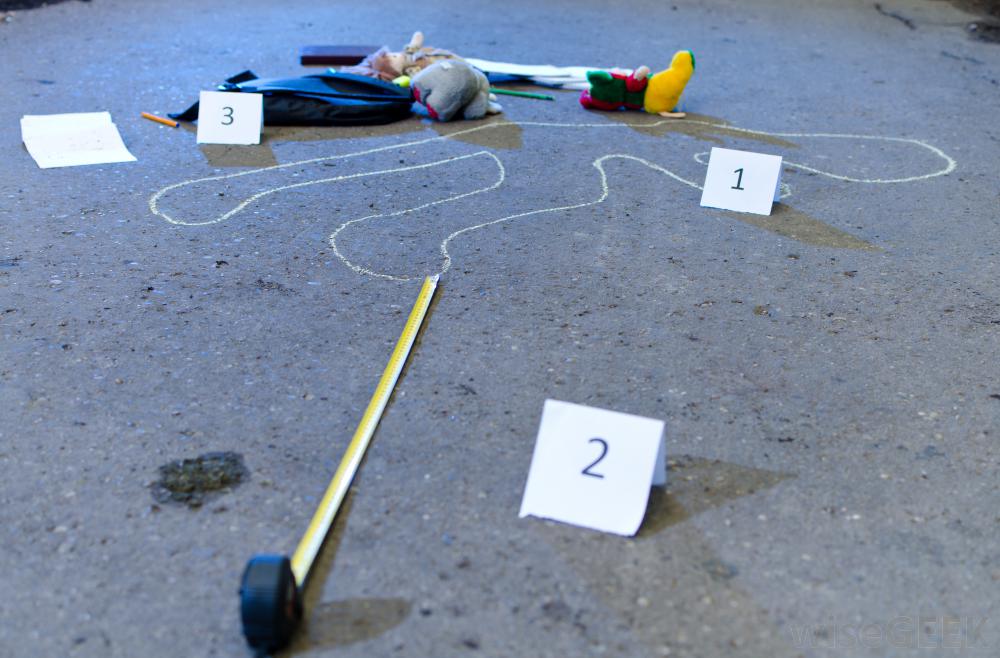Many of the students who study at the best colleges for criminal justice and are assigned essays in this discipline don’t know what to write about. Many students who study criminal justice and are assigned to write an essay don’t know what to write concerning the topic. Everyone who needs to write an essay about criminal justice will find our topics helpful. It is worth choosing one of the following criminal justice essay topics to write a high-quality paper. Our ideas present all aspects of the discipline.
Table of contents
Cybercrime and digital justice topics
- The evolution of cybercrime: From hacking to cyberterrorism.
- Legal challenges in prosecuting cybercriminals across borders
- The role of Artificial Intelligence in fighting cybercrime.
- Privacy vs. security: Ethical implications of government surveillance.
- Cyberbullying and online harassment: Legal frameworks and enforcement gaps.
- Digital evidence and the fourth amendment: Search and seizure in cyberspace.
- The rise of ransomware: Criminal tactics and countermeasures.
- Dark web marketplaces: Policing illegal activities online.
- Social media and criminal investigations: Tools or threats?
- Cryptocurrency and financial cybercrime: Laundering money in the digital age.
- Youth and cybercrime: Understanding the profile of the adolescent hacker.
- Cybersecurity in the criminal justice system: Protecting sensitive data.
Argumentative criminal justice essay topics
- The action of the criminal law in time.
- The action of the criminal law in space.
- Classification of crimes and its criteria.
- The concept of the insignificance of an act in criminal law.
- The concept of criminal liability and its difference from other types of legal liability.
- The concept of criminal legal relationship and its content.
- Causality in criminal law.
- The concept of the subjective side of the crime, it’s content and significance.
- Crimes with two forms of guilt.
- The concept of error in criminal law and its meaning.
- The concept and types of a special subject of a crime.
- The concept of the stages of committing crimes and their criminal law significance.
- The concept of a completed crime. The moment of the end of certain types of crime.
- The concept of voluntary renunciation of a crime and its difference from active repentance.
- Voluntary refusal of accomplices of a crime.
- Responsibility of accomplices in a crime.
- Excess of the perpetrator of the crime.
- The concept and types of implication to a crime.
- The concept of the multiplicity of crimes in American criminal law. Limitation of the multiplicity of crimes from single complex crimes.
- The totality of crimes, their types and criminal law significance.
- Conditions for the legitimacy of necessary defense. The concept of exceeding the limits of necessary defense.
- General principles of sentencing.
- Punishment for the totality of crimes.
- Sentencing based on cumulative sentences.
- Calculation of terms of punishments and offset of punishment.
- The concept of exemption from criminal liability. The role of this institution in American criminal law.
- Obstruction of the administration of justice and the production of a preliminary investigation.
- Bringing the knowingly innocent person to criminal liability.
- The subjective side of the crime as an element of the corpus delicti.
We hope you like these ideas for argumentative papers. We also have other lists that could be helpful for you, like these art essay topics.
Persuasive criminal justice essay topics
- Exemption from criminal liability in connection with active repentance.
- The concept of release from punishment. The significance of this institution in American criminal law.
- Delimitation of murder from other crimes involving the death of the victim.
- The murder of two or more persons and its delimitation from several murders.
- Murder committed in connection with the victim’s official activities or the performance of a public duty.
- Murder involving other crimes.
- Murder qualified by signs relating to the subjective side of the crime.
- Murder with extreme cruelty.
- Murder committed in a generally dangerous way.
- Murder for hire.
- Murder by the mother of a newborn child.
- Murder committed in a state of passion.
- Murder committed when the limits of necessary defense were exceeded.
- Torture. Delimitation from beatings and causing slight harm to health.
- Driving to suicide.
- Failure to assist the patient.
- Leaving in danger.
- Abduction of a person.
- Unlawful deprivation of liberty.
- Human trafficking
- Use of slave labor
- Slander and insult, their similarities and differences.
- Rape.
- The compulsion to act sexually.
- Lewd acts.
- Crimes against intellectual property.
- Provocation of a bribe or commercial bribery.
- Interpretation of the criminal law.
- The concept of crime and its signs.
- Classification of crimes.
When you write a persuasive criminal justice essay, it’s crucial to structure your argument clearly and support it with credible evidence. You should understand the fundamentals of different essay types to sharpen your writing skills. For instance, knowing how to write a diagnostic essay can help you quickly organize your thoughts and present a strong case from the start.
Cause and effect criminal justice essay topics
- Theft.
- Fraud.
- Misappropriation or waste.
- Robbery.
- Extortion.
- Causing property damage by deceit or abuse of trust.
- Deliberate destruction or damage to property.
- Illegal business.
- Credit crimes: concept and types.
- Coercion to make a deal or to refuse to make it.
- Manufacture or sale of counterfeit credit or settlement cards and other payment documents.
- Smuggling.
- Criminal bankruptcies: concept and types.
- Tax crimes.
- Terrorism.
- Taking a hostage.
- Banditry.
- Hooliganism.
- Involvement in prostitution. Organization of prostitution.
- Illegal harvesting of aquatic animals and plants.
- Illegal hunting.
- Violation of the rules of the road and the operation of vehicles.
- The concept and types of crimes in the field of computer information.
- Abuse of official powers.
- Abuse of authority.
- Taking a bribe.
- Giving a bribe.
- Official forgery.
- Negligence.
- Issuance of a knowingly unjust verdict, decision or other judicial act.
- Arbitrariness.
- Criminal policy and current trends in its development.
- Criminal law as a branch of American law.
- Criminal law as a branch of legal science.
- Main directions and schools in criminal law.
- Tasks of the science of criminal law at the present stage.
- Criminal law relations.
- System of principles of criminal law.
- Tasks and functions of criminal law.
- Sources of the criminal law of foreign states.
- Crime as a type of offence.
- The concept of criminal liability.
- Forms of implementation of criminal liability.
- Structure of a crime and its value.
- The object of the crime.
- The objective side of the crime as an element of the corpus delicti.
- Optional features of the objective side of the crime and their meaning.
- The subject of the crime and its signs.
- Sanity and insanity in the criminal law of the USA.
- The special subject of the crime.
We hope that these topics will be helpful for your cause-and-effect essay. If you need an idea for a more serious project, check out our dissertations topics.
Criminal justice essay example
Introduction
Criminal profiling happens to be an investigative tool that is used mostly by the security forces. This is aimed at helping them predict and identify characteristics of criminals who are not yet known. This idea has many names as it can also be referred to as criminal personality profiling and criminological profiling (Kocsis, 223). Despite all these descriptions, it serves only one aspect of allowing investigators to compile and come up with the right description of the criminal involved. The criminal investigative analysis can also employ some geographical profiling to determine the location of the offender.
The criminal profiling procedure is applied by detectives for the purpose of fulfilling certain needs in the investigative report (Kocsis and Heller, 2004). For instance, the main point is to enable law enforcement officers to gain a high knowledge of the criminal. This is done on the basis of social and psychological aspects of the offender in order to understand the circumstances of the offence being committed (Kwok. 2005). This is followed by the second aim of providing the investigative bodies with a perfect psychological evaluation of the criminal. This is aided by the evaluation and scrutiny of the belongings of the criminal.
After these two processes, there is a third goal whose aim is to highlight suggestions as well as strategies for use during the interviews. As a matter of fact, in the modern world, criminal profiling happens to be a very critical step in investigative science hence being the third phase of the whole process. For instance, the first wave of criminology involved the studying of the criminal’s cues, and it was applied during the 19th century. The second phase followed later and this involved studying of the crime committed by the offender. This include issues such as frequency studies as well as other aspects of connecting the criminal with the events they participated in. currently, it’s now what we are referring to as criminal profiling and it majors on studying the criminal’s psyche.
The criminal profiling job is done by people referred to as criminal profilers, and they work closely with the detectives in the investigation. Their work is to help the detectives to come up with leads on high profile criminal suspects (Wroblewski, Wiggins and Ryan, 2006). With their knowledge, they identify various factors which explain almost everything about specific criminals. In this case, profilers engage in analyzing the information and materials collected from the scenes of crime.
The process of criminal profiling is also made effective by the information obtained from the ballistic experts. This applies on cases where there were incidences of shooting and some ballistic evidence is obtained (Bennell, Taylor and Snook, 2007). A criminal profile can be created from any blood stains and is done by blood stain analysts who undertake extensive research on the component. For instance, the Deoxyribonucleic acid of the criminal is able to be identified if their blood was left at the crime scene. As a whole, these groups can be referred to as forensic experts who look at all the aspects revolving around the crime. This is done for the purposes of coming up with clear descriptions of the criminal.
Criminal profiling thus deals with compiling and developing a perfect psychological profile of the criminal. The highest stronghold of getting this important information is the crime scene where every data is able to be collected. With this phase being associated with studying the psyche of a criminal, then it has to be done by experts. These are thus experienced forensic experts who have a high experience on criminal minds.
The criminal profile being emphasized in this case provides a sketch of the psychological status of the criminal.
Based on the information collected from the crime scene, a profiler can gain a lot of knowledge about the mental status of the offender. This aspect is thus very useful in homicide cases as the reason for undertaking such an act is well identified effectively (Bennell, Taylor and Snook, 400). As a matter of fact, if not applied, then many offenders can go scot free even after causing atrocities to the victims. Criminal profiling is thus an important aspect that works well with rapists, arsonists and homicide murderers.
To be precise, criminal profiling majors on the crime scene because the organization or disorganization of the criminal is identified (Kocsis, 2005). This is because there are criminals tend to plan things ahead before executing them. In this case, an organized criminal is known to plan ahead and lays everything in strategic positions waiting for the main deal. This is a person who does not take chances but is very prepared and carries everything that is needed. With such kind of information, profilers are able to determine the kind of person they are dealing with. With this, the detectives ought to be sharp because the person in question is a smart criminal who conceals any possible evidence.
On the other hand, the disorganized criminal tends to leave trails of evidence at the crime scenes something which eases crime profiling. According to researchers, most of the organized criminals happen to be the first children in their families (Torres, Boccaccini &Miller, 2006). It has also been concluded that they are very intelligent people who engage in certain actions due to some stressful situations. Due to secrecy and smartness involved, getting them tends to be very difficult as they conceal any evidence. As a result of this, they even go ahead to extend of watching as the investigations are being undertaken. In a case like this, criminal profilers tend to have a lot of work in compiling the necessary details about the offender.
On the other hand, it’s very easy to collect information about a disorganized criminal because of the spontaneous offenses they commit. In this case, a disorganized criminal depersonalizes the victim, hence erasing himself from the crime because there is not much to be analyzed. As a result of this, criminal profiling enables the drawing of lots of conclusions from the scene of crime (Kocsis, 2006). Criminal profiling has proved that most of these offenders are not intelligent enough to be very smart. In most cases, these comprise of children or medium age offenders who are not organized.
Criminal profiling tends to work well on analyzing the above stated criminals because of how they operate. However, this is different with criminals who possess both the criminal traits hence being more difficult to deal with. This is because the scene of crime seems to comprise of both aspects of disorganized, and an organized criminal. For instance, the offender might have used their own tools and randomly picked a victim (Snook, Eastwood and Gendreau, 2007). As a result of this complexity, creating a file of a mixed offender tends to be more complicated than for the other offenders. The detectives are at this stage faced with a lot of complications as the available materials for analysis are not easy to extract information.
At this point, criminal offenders have been seen to help in gathering information about the potential offenders. However, this is not the only function as it assists in narrowing the large numbers of suspected criminals presented by the police (Dowden and Bennell. 2006). As a result of this aspect, investigators have been able to apprehend many criminals by differentiating the guilty and the not guilty ones. This has been made possible by the ability of the criminal profiling to access the patterns of previous criminal activities. In this perspective, detectives have been able to easily highlight and predict the characteristics of the offenders in question. This is to mean that killers and other potential criminals do not get to escape free (Homant, 1998). They are thus caught and apprehended in order to prevent them from engaging in more criminal activities…
Criminal justice research paper writing help









